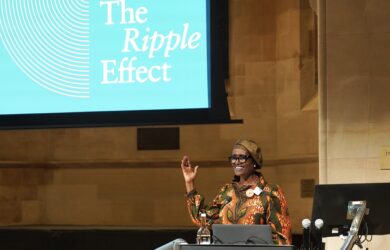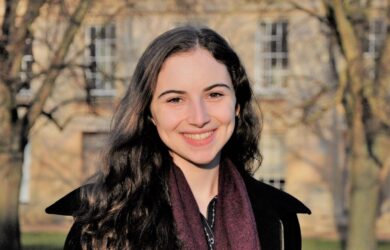“There is a growing interest in the importance of population diversity in western countries, but it is very interesting to see it emerging in India, which may be the second most densely populated country in the world. Anything that happens here will have severe repercussions on global disease patterns.”
PhD student Srilakshmi Raj is attempting to look at variation of diabetes and obesity genes among diverse ethnic groups in India. A Gates scholar at the University of Cambridge where she is specialising in Biological Anthropology, Sri has been doing research for the last few months in Karnataka state in southern India.
Diabetes is a huge problem in India, and the country is projected to have the highest number of diabetes in the world. Certain regions of India, and certain ethnic groups have more prevalence of it than others, and Srilakshmi wants to find out if that is due to genetic causes. For example, prevalence of diabetes and obesity is higher in urban compared with rural areas. Similarly, incidence of the disease varies among ethnic groups within the urban centres. Therefore, she is comparing individuals residing in cities with those from villages. Srilakshmi says: “Diabetes is one of the most pressing medical issues in India right now and will create a major public health burden.” Recent research from European populations has identified multiple genes associated with many complex diseases, including diabetes. She is attempting to see how many “variants” of these genes are common to the peoples of the sub-continent.
Srilakshmi says some previous studies trying to associate particular genes with diabetes and obesity risk in India have been misleading because they have sought to be representative of the country’s population diversity by taking a limited number of people from the North or South of India and often ignoring their ethnic background. In fact, she says, Indian population/ethnic diversity is highly complex (and only second to the human diversity in Africa). This is due to the country’s caste structure and widespread consanguinity within ethnic groups. “Even in one modest-sized village in India you can get half a dozen to a dozen ethnic groups that don’t inter-marry. Each of the sub-castes has its own population and evolutionary history so they need to be studied at a very local level,” says Srilakshmi. “A one-size fits all approaches could easily mislead.”
She is studying 15 different population groups in Karnataka that represent the classic five main caste groups. She adds that different groups have different levels of diabetes and their response to medical treatments can vary. One group, she has been told, do not come round from a general anaesthetic and have to be given an alternative form of anaesthesia. Another group she has studied consume high levels of dairy products and have a lot of gingivitis, but low levels of diabetes.
Srilakshmi, who is from Lexington, Massachusetts in the US, says Indians have a high risk of diabetes and obesity and tend to get diabetes at a younger age than their European counterparts. This could be because of the way their bodies store fat. Although their babies are smaller, for instance, they tend to have a greater fat component and adults tend to store fat around their stomachs rather than in other places.
She adds that the recent mass migration of people from rural areas to the cities and subsequent switch to a more sedentary lifestyle and a fatty diet have contributed to health problems. Awareness of the problem and its potential impact on mortality rates is also spreading to the rural areas, where people use traditional and natural remedies to treat various illnesses, such as herbal medicines, their own forms of acupuncture and herbal juice which curb the appetite. Many tribal people, who tend to be very healthy because their food source is natural. Some of these tribes have been moved into Government housing from the forests where they used to live, but still keep contact with their relatives so have good access to traditional therapies.
Srilakshmi says that her work in both rural and urban areas in Karnataka has been “really enlightening”. By collecting samples in people’s homes and villages she has gained deep insights into their lifestyles. She has collected 1,600 saliva samples across the state and has spoken to up to 10,000 people from all walks of life. “The level of understanding of the impact of diabetes among Indians is very good. Everyone knows that there is a problem,” she says. Many have learnt about the problems through word of mouth.
She says that particularly in the rural areas, people have been very appreciative of her work, although she has had to spend some time making local connections to build up people’s trust before they will open up to her. “I have sometimes had to take a circuitous route, making connections with local contacts and learning to speak the language fluently,” she says. “People in the rural areas appreciate someone taking an interest in them. I don’t think they have ever had someone come from abroad and listen to the personal stories of their community’s heritage and traditions before.”
Srilakshmi has been working with the Indian Institute of Science, the Centre for Human Genetics in Bangalore and the Centre for Cellular and Molecular Biology (CCMB) in Hyderabad, where she is currently identifying the specific genetic variants of type 2 diabetes and obesity-associated genes in the DNA samples she has collected.
She hopes to finish her research this year and to use it to promote a community-based approach to medicine and eventually community and family-based therapies for conditions such as diabetes. She hopes that some day these approaches will lead to the development of personalised medications, even in remote parts of the world. Her work has already attracted media attention, including an article in the prestigious Times of India.
She mentions that geneticist Francis Collins, director of the National Institutes of Health, has commented on the importance of community-based medicine. “There is a growing interest in the importance of population diversity in western countries, but it is very interesting to see it emerging in India, which may be the second most densely populated country in the world,” she says. “Anything that happens here will have severe repercussions on global disease patterns.”












